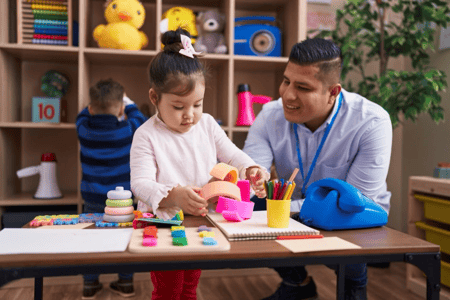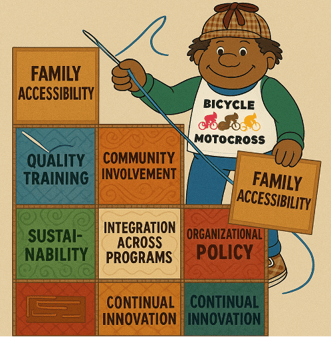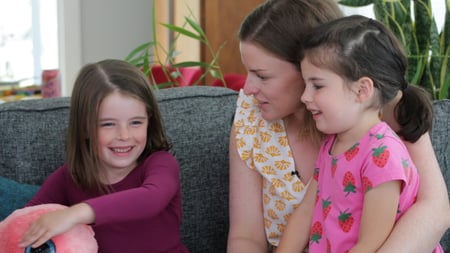How the Well-Baby Program Supports Healthy Child Development

Check out our blog for social-emotional learning articles, news, and more!
.jpg?length=320&name=5%20SEL%20Techniques--empowercc%20(1).jpg)
Social-emotional learning techniques in the classroom promote positive mental health and emotional well-being in students.
By incorporating these techniques into the educational setting, teachers can help students develop essential social and emotional skills for success in school and beyond.
Social-emotional learning (SEL) techniques in the classroom encompass a range of strategies aimed at helping students cultivate essential life skills. These techniques are structured to aid students in navigating their emotions, nurturing effective interpersonal relationships, and making responsible decisions.
At its core, SEL techniques teach students to understand their feelings, empathize with others, and engage in positive interactions. They include practices that focus on five key competencies:
Through SEL, educators can provide students with a holistic learning experience that prepares them for the emotional and social complexities of the world.
The following five techniques and activities collectively provide a brief framework of best practices for nurturing the social and emotional well-being of students so you can prepare them for long-term success at school, at home, and throughout life.
Relationship building focuses on developing a positive rapport with one another, cultivating a space to build the necessary skills for genuine connection and understanding.
Teachers can employ activities like write-pair-share, community-building activities, and student conversation prompts (e.g., "What makes someone a good team-player?"). When implementing relationship-building techniques, communicate why. For example, when pairing students together to work on an activity, say, "We're pairing up so you can practice your collaboration and relationship skills."
This foundation of mutual respect and trust is critical for students as it enhances their capacity for empathy and collaboration while bolstering their engagement and motivation to learn. By prioritizing relationship building, educators lay the groundwork for students to be more inclined to take risks, express themselves, and actively participate in their own learning.
Additionally, teachers can utilize evidence-based SEL curricula, such as the Classroom Dinosaur curriculum, to teach their students friendship skills, emotional language, problem-solving, and anger management. This program structure, which can be seen below, provides structured lessons and activities to support the development of social-emotional skills in students, further enhancing their ability to build positive relationships and navigate social interactions effectively.

Emotional regulation and management techniques are vital tools for students to navigate their internal emotional worlds. By integrating these techniques into classrooms, educators provide students with the means to recognize their emotional triggers and develop strategies for dealing with wide-ranging feelings constructively.
These techniques involve exercises that focus on deep breathing, mindfulness, awareness-raising, and positive self-talk, which can help lessen the impact of stress and anxiety on students' learning and interpersonal interactions. You can try activities where you ask students to name different emotions, write a prompt on the board asking your students to reflect on a feeling they had recently and how it impacted them, or have them participate in role-play activities.
Through guided practice, students should learn to apply emotional regulation strategies in various scenarios. Doing so enhances their ability to stay focused and make informed decisions, even in emotionally charged situations. Integrating emotional regulation and management techniques in the classroom can equip students with lifelong tools for emotional resilience and boundary setting.
Positive reinforcement transforms the classroom environment by celebrating student progress and spotlighting appropriate behaviors. This technique, grounded in the principle that rewarded behavior is likely to be repeated, employs various SEL strategies like:
Positive reinforcement is a proactive approach that builds a supportive learning environment where students feel valued and motivated. By strategically applying positive reinforcement, educators can promote a sense of accomplishment among students and cultivate an atmosphere where students are inspired to achieve their goals.
This strategy reinforces desired behaviors while playing a crucial role in boosting students' self-esteem, resilience, and growth-oriented mindsets.
Collaborative problem-solving brings students (and teachers) together to address challenges and resolve conflicts as a unified group. This method emphasizes the value of collective intelligence and each student's diverse perspectives.
By engaging in joint problem-solving activities, students learn the importance of teamwork, negotiation, and shared responsibility. It nurtures an environment where each voice is heard and respected, fostering a sense of belonging and mutual support.
Teachers can facilitate this process by presenting real-world problems or scenarios relevant to the students' experiences, encouraging them to brainstorm solutions, evaluate their effectiveness, and implement the best ones. Through this interactive process, students develop essential life skills such as adaptability, critical thinking, and compromise, all while enhancing their social-emotional competence.
Always remember to underscore the purpose of any problem-solving exercise and explain its purpose in exploring different perspectives and building social awareness skills. Collaborative problem-solving equips students with the tools to navigate interpersonal relationships in the classroom and their everyday lives.
Techniques that build active listening and communication skills help students listen with the intent to understand rather than respond or react. Educators can nurture these skills through structured activities emphasizing eye contact, paraphrasing to show understanding, and asking open-ended questions that encourage thoughtful responses.
Incorporating exercises that enhance verbal and non-verbal communication skills can aid students in articulating their thoughts and emotions clearly and confidently. By engaging in role-playing scenarios and group discussions, students can have a practical platform to practice their listening and communication skills. This practice ultimately improves their ability to navigate social situations and resolve conflicts with empathy and respect.
Focusing on active listening and communication enriches a student's personal and academic life while preparing them to engage constructively with others.
To effectively integrate social-emotional learning techniques into the classroom setting, educators should aim for a balanced mix of structured and spontaneous learning activities:
Regular teacher training and professional development on SEL strategies for educators can ensure that implementation is effective and responsive to the unique needs of their students. But how do you know where to start?
Assessing your readiness for implementing social-emotional learning activities (and planning to implement them) requires a proactive, intentional approach.
Organizations focused on child development, education, mental health, and social services that want to explore evidence-based early interventions for social-emotional learning should start by asking the following questions to assess readiness:
Check out this free program implementation resource to foster critical thinking and collaborative discussion among your agency stakeholders as you determine your readiness for programs that support social-emotional learning in the classroom.
Wrapping up, the integration of social-emotional learning techniques into educational practices presents a transformative, vital approach to student development. The SEL strategies of relationship building, emotion regulation, positive reinforcement, collaborative problem-solving, and active listening enrich the learning environment, fostering a foundation for both academic and personal growth.
Through programs like Incredible Years, schools and early-childhood programs have access to a wealth of resources that offer evidence-based methods for effectively nurturing students' social and emotional competencies.
As education continues to evolve, the emphasis on social-emotional learning underscores its critical role in preparing students for the complexities of life beyond the classroom. Schools and early-childhood programs are thus urged to embrace these practices, recognizing their profound impact on shaping resilient, empathetic, and well-rounded individuals.
Incredible Years provides evidence-based programs designed to aid early interventions for children to improve their emotional and social competencies, focusing on equipping parents, caregivers, and teachers with necessary strategies and support. Our unique approach is designed to address each child's individual needs and help them thrive. For more information about our programs and how they can help, visit our programs page.





